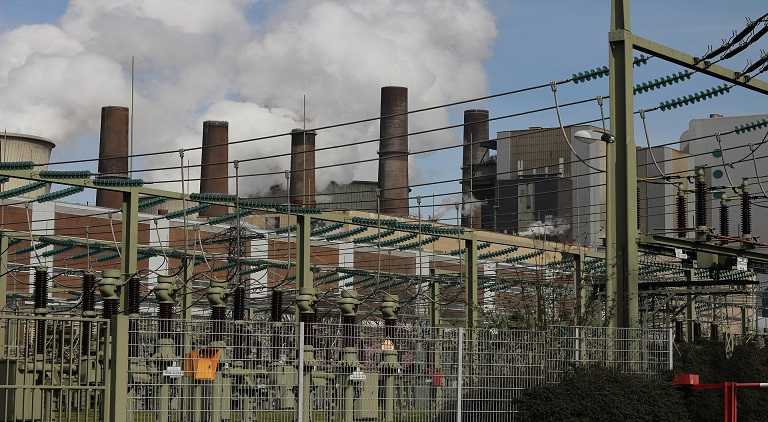Improving energy efficiency of power plants
By EPR Magazine Editorial May 26, 2021 7:16 pm IST
By EPR Magazine Editorial May 26, 2021 7:16 pm IST

The time has come where we need a serious discussion about not starting more new coal-fired stations. Ajay Shankar shares more on improving energy efficiency in power plants.
One way of looking at efficiency is in terms of costs. So how do we get the least cost? That’s how all commercial enterprises or even others look at it. But when it comes to the power sector, we need to look at efficiency through another prism, which is the prism of energy consumption.
Power sector reality
When we look at the reality of the power sector in India today, we see serious contradictions what would be called a classic case of market failure. Let’s look at the coal-fired sector. The marginal cost of the coal consumption per unit of electricity is the least from the new supercritical power plants. It’s the highest from the very old inefficient plants because of the technology being old.
Today, there is a very large capacity of supercritical power plants which have been commissioned to large extent by private investment and they are unable to run at full capacity, as many of them are struggling to get coal. On the other hand, we have these old inefficient plants, which are continuing to run. So, if one were to convert the whole power sector of India into one centrally integrated plant kind of undertaking, then clearly all the old inefficient plants won’t run and the new ones will.
Energy efficiency in thermal power plants
So, this is a low hanging fruit in terms of getting energy efficiency in the thermal power generation in India. Now, how do we go forward? Logically, the right thing to do is to see that all the new super critical power plants get coal supply, so they can step up generation as much as possible. This is not happening. It says a policy or a regulatory challenge. In my view, this can easily be overcome by the right kind of policy decisions.
The second challenge is having a plant without a power purchase agreement (PPA), but the same buyer or the DISCOMs is locked into long term PPAs with inefficient plants. So here, the way forward would be to get the regulatory process to move forward.
So far, what has happened is the central energy authority has drawn up lists of all old power plants, which need to be retired. But that’s a rational assessment of what needs to be done. Now, how to make it happen is the next stage and the next challenge. In that, there are two instruments which can be used, and the time has come to use them. One is that there is a regulatory provision in the energy efficiency norm of the country, which allows the government to say that if you don’t have certain efficiency levels, you will not be allowed to produce. This version of the law is not being used, the law that has been used by the Bureau of Energy Efficiency (BEE) is only a star labelling and some trading in terms of energy efficiency. For old coal-fired stations, the time has come for a clear mandate to say that if you have a heat rate, which is below a certain minimum efficiency requirement, then you should close down in the next two-three years. If that decision is taken, then getting better returns for fresh investments will not be a problem.The second regulatory provision that can be used is from the environment regulatory side. In the US, Obama during his Presidential tenure wanted to push low carbon emissions. The Environment Protection Agency came up with norms for all utilities that your carbon emission per unit of extreme needs to come down in a certain pathway over a number of years. There again, the mandate could come that if your carbon emission per unit will exceed from a thermal power plant is above a certain level, then you do close down in two-three years.
If we get these two decisions in place soon, then I think there’ll be automatic compliance by and large with the environmental norms which are being breached, or the target date is postponed and we get a very major breakthrough in energy efficiency in the thermal power sector.
Now, I’m arguing for all this assuming that for some time, coal-fired generation would remain the backbone. But the time has come where we need a serious discussion about not starting more new coal-fired stations. Those projects where work has already started, will obviously get completed. But before we start any more, we need a very serious pause, and a discussion about the pathways of not setting up new coal-fired stations, or using the existing gas-fired stations and seeing how quickly we can move in terms of storage, etc, to be able to take care of round-the-clock needs.
Opportunities in solar
So far, our success in renewable and solar has been big solar farms. Now, the fact of the matter is that if you do de-centralised solar generation at the village level, below one megawatt, then you don’t need investments in transmission, thus reducing investment cost in transmission.
Therefore, the target should be that we achieve a major shift in getting decentralised generation in villages going below the one-megawatt level and we can only get that if we have a feed-in tariff regime. So, the DISCOMs saves money because of low delivery cost, the country saves on transmission investments, and the village gets reliable supply. This creates a huge efficiency gain there and a much easier market-based achievement of the target of 450,000 megawatts.
Author: Ajay Shankar, Distinguished Fellow, TERI
We use cookies to personalize your experience. By continuing to visit this website you agree to our Terms & Conditions, Privacy Policy and Cookie Policy.